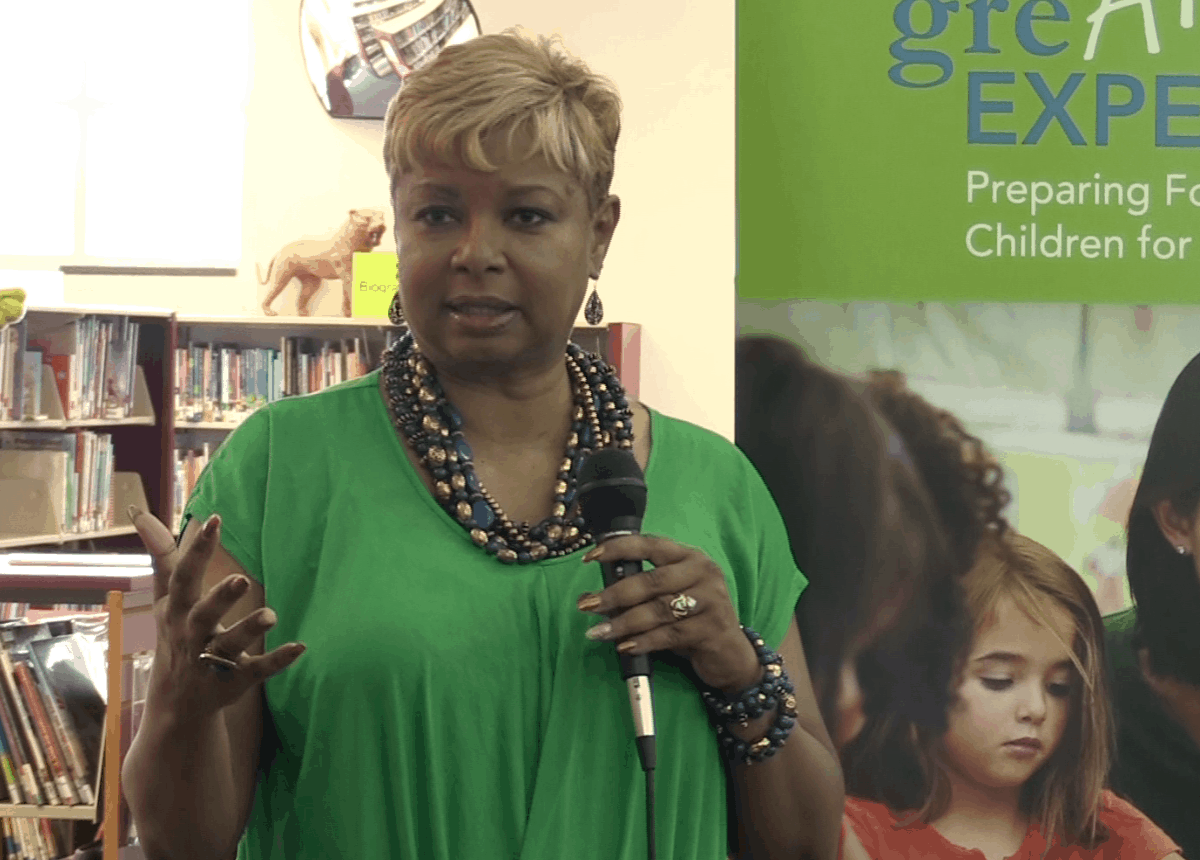
A recent opinion piece at the Newsweek website began with the sentence, “Without being too smug, I have the answer to the success (or failure) of public education.”
With a bold opener like that, it was hard to stop reading.
Written by Dr. Maryanne Kane, a 30-year veteran of the classroom, the article begins with a reflection on end-of-grade testing, and the pressure faculty and students are under to succeed at her chronically low-performing school.
Kane notes her frustration at seeing a cycle of educational solutions that are “the same methods over and over with different names and packaging.”
To build “educational systems for the future,” Kane argues we must look at where progress has been made and research has been advanced: the profound impact of quality early childhood education on the future success of a child.
Kane makes the argument that “pre-school” should become part of the public school structure in this country. Kane writes, “Public school academic performance has not improved because the focus of a child’s educational career begins in kindergarten. However, if the public school model began at the age of 2 or 3, the tax dollars used now as later-down-the-road remedies would no longer be needed. Prioritizing early childhood education programs in the public school system is crucial, not only for the success of the child’s educational career, but as scientific research has demonstrated, for society at-large.”
It is a thought-provoking argument, and one that certainly should be considered in the larger education policy discussion in our state.
But whether there ever is a structure that extends the public school model to earlier years in a child’s life, the conversation about access to quality childcare and educational enrichment cannot be postponed in the here and now.
Recently, EdNC launched a new series called Focus On Forsyth, a year-long series that examines early childhood initiatives in one North Carolina community. The goal is to hold up best practices in early childhood education for the rest of the state — models that might be replicated elsewhere — even in those places not blessed with large philanthropic foundations, community-involved businesses, or large postsecondary institutions.
As one Winston-Salem resident told me, the goal is to create programs that are “portable and affordable.” That can be reproduced elsewhere, regardless of whether you are a metro area or a small-town.
And as Kane notes in her opinion piece, and as research has proven elsewhere, improving access to quality early childhood programs is an imperative for closing the achievement gap that manifests itself many years later in the form of end-of-grade test scores, high-school graduation rates, postsecondary persistence and completion, and employment and economic stability.
One of the most cited research studies on the benefits of quality preschool on future success was the High/Scope Perry Preschool study, a longitudinal study of 123 low-income African-American children born in Ypsilanti, Michigan, in 1965. The children were sorted into two groups, those receiving a structured pre-school education program and those receiving no formalized instruction or home visits.
Researchers tracked the two groups through childhood, adolescence, and into adulthood. Children who enrolled in the program group had higher rates of educational attainment, were more likely to be economically secure, had better jobs, were less likely to have spent time in jail, and were less likely to have received government assistance.
Researchers project the cost of a similar two-year program would be about $15,000 today, yet with an almost $200,000 return on investment through public benefits saved in “… decreased welfare, crime, special education, and justice system costs” and in increased taxes from higher-paying jobs gained through higher levels of educational attainment.
But it is worth remembering that a child’s future success is often influenced even before birth. The education, earnings, and economic security of the family a child is born into can have profound and lasting effects upon their life well into adulthood.
An ongoing partnership between the Federal Reserve Bank of Minneapolis and the University of Minnesota has examined the long-term benefits of early childhood educational opportunities.
A recent article by
Citing recent studies that contradict the long-term gain found in other studies, like the High/Scope Study, Grunewald examines ways to support and maintain the positive influences of preschool and other early childhood educational opportunities, including increased parental involvement.
Also citing Harvard researcher Heather Weiss, Grunewald goes on to write that “… by sixth grade, children in middle-income families are likely to have 6,000 more hours of learning time than children who grow up in poverty, including parental time spent reading with children, enrollment in preschool, after school and extracurricular activities, summer camps and other summer learning activities, and field trips to museums and zoos. The gap in non-school learning activities is consistent with school achievement gaps observed between children from higher-income families and those from lower-income families.”
But Grunewald does not take into consideration the luxury of stable employment and family-friendly work places that are often enjoyed by middle- and high-income parents. Six thousand hours might be an insurmountable climb for a parent worried about unreliable transportation or juggling shifts at two jobs.
A 2015 policy brief from the Carsey School of Public Policy asked the question, “Do Hispanic infants start life’s race behind the starting line, poor and disadvantaged?”
Research found that a Hispanic infant is almost three times as likely to be born into poverty as a non-Hispanic white infant, and those odds are even worse for rural Hispanic infants. And those infants are also less likely to receive government assistant than impoverished infants of other races.
The authors of the Carsey brief conclude their report by noting, “Poverty in utero and at birth shapes a child’s long-term cognitive development and the prospect of incorporation into American society. Early childhood poverty also tends to set into motion a series of lifecycle disadvantages (such as inadequate parenting, bad neighborhoods, underfunded schools, and poor health care) that greatly increases the likelihood of poverty in adulthood.
Why does this matter for North Carolina? Rebecca Tippett at Carolina Demography notes that Hispanic enrollment in the state’s public schools increased by almost 307 percent between 2000 and 2014, from more than 56,000 in 2000 to 228,695 in 2014. And as noted at the EdNC Data Dashboard, Hispanics make up almost 14 percent of the state’s population under the age of 18, and that percentage will most likely continue to trend upward overtime.
But regardless of race or ethnicity, any effort to close the achievement gap must take into consideration the environment into which a child is born. As Kane rightly notes in her article, the period of brain development between birth and five years is critical to the future success of students in our schools, but the harsh reality of poverty might mean even the best and most robust early childhood initiatives can fall short.
And parents who want to see their children succeed — who want to be involved — might be faced with the unenviable choice of basic needs over quality time with a child. It might mean leaving a child with a neighbor or family member to work a second shift. It might mean the difficult choice between paying the monthly utility bill or enrolling their child in a five-star pre-school.
It’s a reality for many parents, so as we start to think about what quality early childhood means in this state for all children, let’s not forget what that means for all parents as well.


